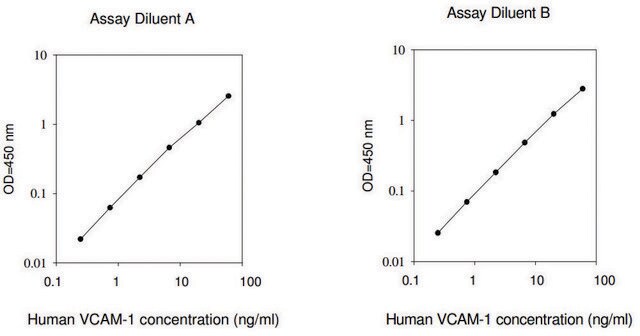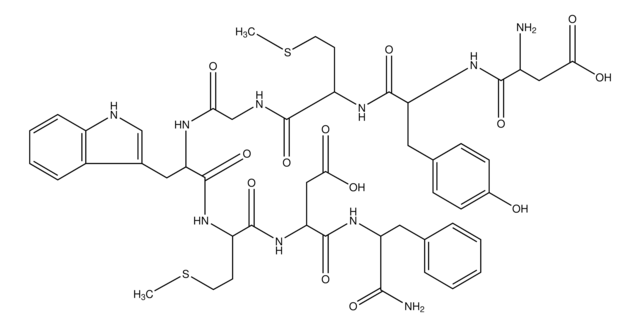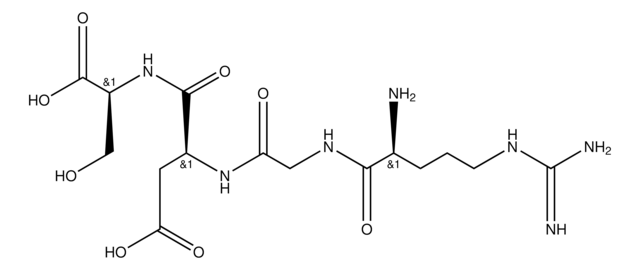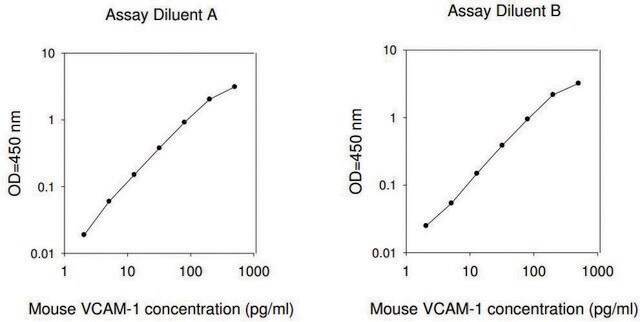推薦產品
化驗
≥95% (HPLC)
形狀
powder
分子量
59670 g/mol
技術
toxicology assay: suitable
溶解度
DMF: 20 mg/mL, clear, colorless to yellow
適合性
suitable for molecular biology
儲存溫度
−20°C
SMILES 字串
CSCC[C@H](NC(=O)[C@@H](N)Cc1c[nH]c2ccccc12)C(=O)N[C@@H](CC(O)=O)C(=O)N[C@@H](Cc3ccccc3)C(N)=O
InChI
1S/C29H36N6O6S/c1-42-12-11-22(33-27(39)20(30)14-18-16-32-21-10-6-5-9-19(18)21)28(40)35-24(15-25(36)37)29(41)34-23(26(31)38)13-17-7-3-2-4-8-17/h2-10,16,20,22-24,32H,11-15,30H2,1H3,(H2,31,38)(H,33,39)(H,34,41)(H,35,40)(H,36,37)/t20-,22-,23-,24-/m0/s1
InChI 密鑰
RGYLYUZOGHTBRF-BIHRQFPBSA-N
基因資訊
human ... CCK(885)
rat ... Cckbr(25706)
尋找類似的產品? 前往 產品比較指南
Amino Acid Sequence
一般說明
Several biologically active fragments of the neuropeptide cholecystokinin (CCK) are present in the brain, where they interact with CCK-A and CCK-B receptors. Among these fragments, CCK-4 is notably abundant in the cortical and limbic brain structures. CCK-4, a bioactive form of cholecystokinin, is a peptide hormone that regulates food intake by binding to CCK receptors in the gut and brain.
應用
生化/生理作用
包裝
準備報告
儲存類別代碼
11 - Combustible Solids
水污染物質分類(WGK)
WGK 3
閃點(°F)
Not applicable
閃點(°C)
Not applicable
個人防護裝備
Eyeshields, Gloves, type N95 (US)
分析證明 (COA)
輸入產品批次/批號來搜索 分析證明 (COA)。在產品’s標籤上找到批次和批號,寫有 ‘Lot’或‘Batch’.。
我們的科學家團隊在所有研究領域都有豐富的經驗,包括生命科學、材料科學、化學合成、色譜、分析等.
聯絡技術服務






